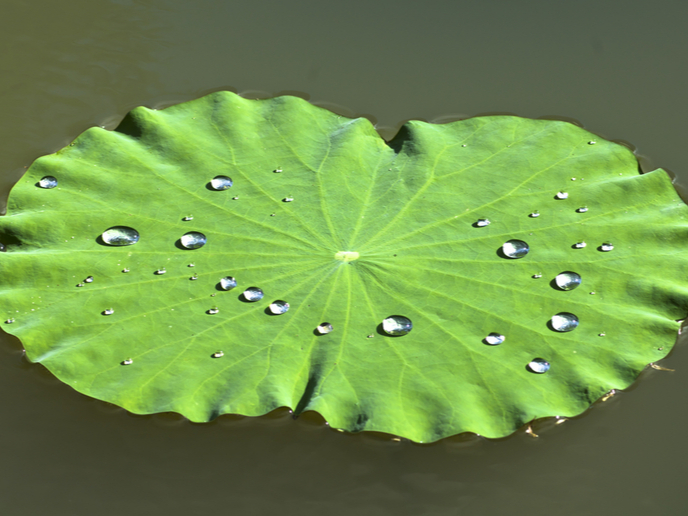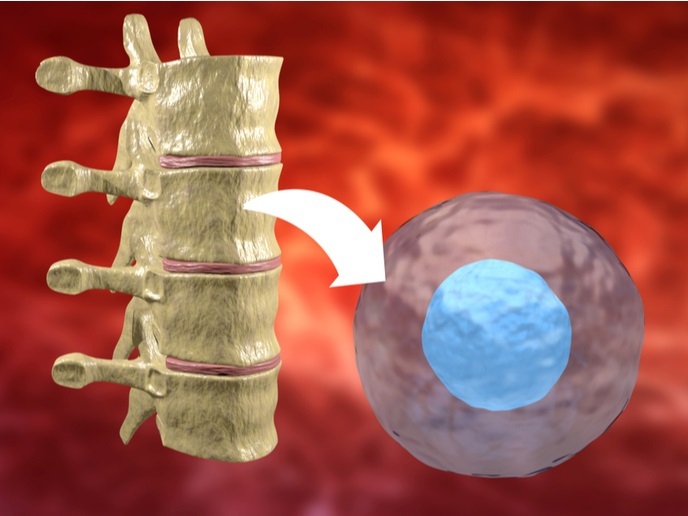Novel laser technologies create antibacterial surfaces
Materials’ surface textures can have very important effects on their antibacterial properties. For example, in nature, the surface microstructure of the lotus leaf(opens in new window) makes it water repellent. Since bacteria are mainly transported in fluids, dispersing the fluid eliminates the bacteria. Similarly, surfaces having certain rough textures at scales smaller than a bacterium can impede the adhesion of bacteria by restricting bacterial contact points or by scratching the cell membrane. Combining artificial water-repelling and antibacterial textures could have important industrial applications, for example in the food sector. Texturing is the manufacturing process of creating a desired texture. Theoretically, a laser could shape the surface at tiny scales without melting or cutting the material which would introduce undesirable shapes. However, to date, industrial lasers have been inadequate, with pulses being too slow, which melts the material. Additionally, industrial manufacture requires rapid texturing of large surfaces, and current lasers are not powerful enough for high-throughput production.
New laser texturing system
The EU-funded TresClean project developed texturing technologies intended for the food industry and home appliance sectors. The new system is capable of rapidly texturing large areas, simultaneously achieving water-shedding and antibacterial patterns. The system also includes a new scanning technology for beam control. The self-cleaning property is obtained by combining two different surface textures. “In this case, the morphology consists of the superposition of microscale roughness and nanoscale features in a pattern that is similar at both scales,” explains Luca Romoli, project coordinator and professor at the University of Parma. “This so-called hierarchical structure is superhydrophobic(opens in new window). Water essentially slides off a carpet of air nanobubbles.” TresClean partners evaluated several texturing technologies and settled on two for further development. One is direct laser interference patterning(opens in new window), where the interference of four laser beams generates a specific pattern on the surface. The second technique is laser-induced periodic surface structures(opens in new window). This creates the desired texture via a self-rearrangement of the material following the instability state generated by exposure to ultrashort laser pulses. “A laser pulse can be seen as a stone thrown into a pond,” adds Romoli. “The waves generated by the shock on the water’s surface are similar to the ridges which form on a metallic surface.”
The concept proven
At the start of the project, existing lasers offered neither sufficient power nor speed for high-throughput production. The project developed and verified the combination of suitable lasers, able to achieve pulses at 10 MHz, and a scanning head, able to scan a 200 x 200 mm area in 200 milliseconds. When integrated into materials processing machines, the new system allowed texturing with the desired parameters on metal components. The textures were successfully transferred to plastic parts during injection moulding. Testing the cleanliness of parts produced this way showed 90 % reduction in bacterial adhesion compared to untextured parts. Metal parts performed better than plastics. Durability testing of metal parts was also satisfactory. Antibacterial surfaces have numerous applications in industry, including various food and appliance sectors, plus potentially marine antifouling systems. Representatives of such sectors have expressed interest in TresClean’s new technologies. These developments may help introduce a range of self-cleaning products.







